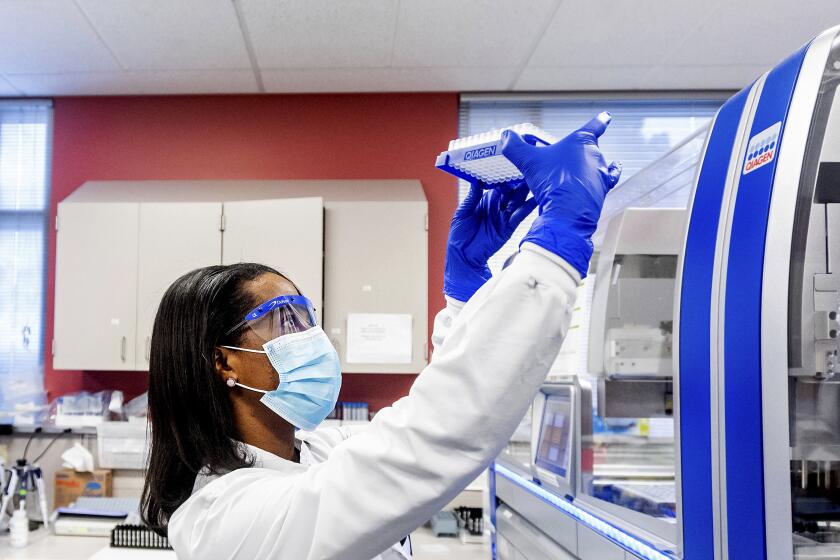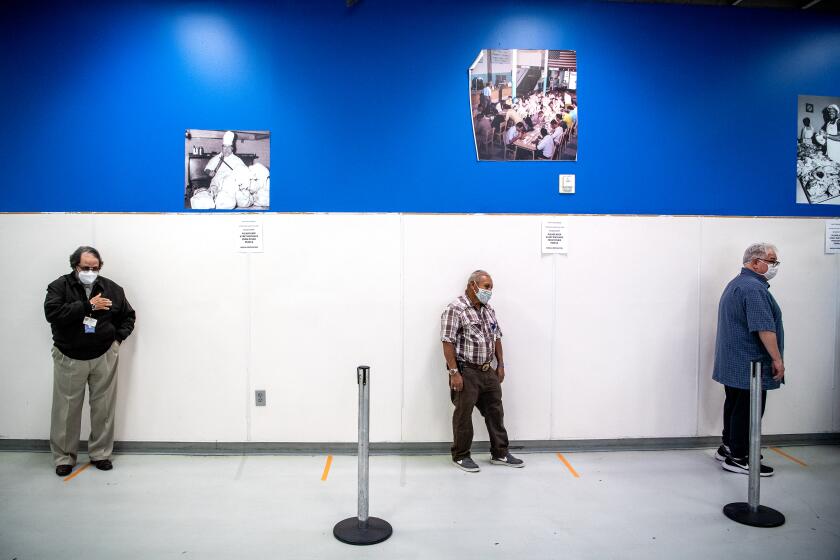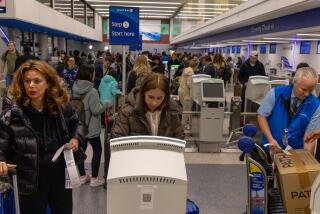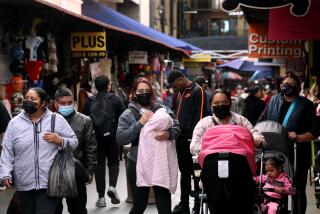The ‘nightmare scenario’ for California’s coronavirus strain: Here is what we know
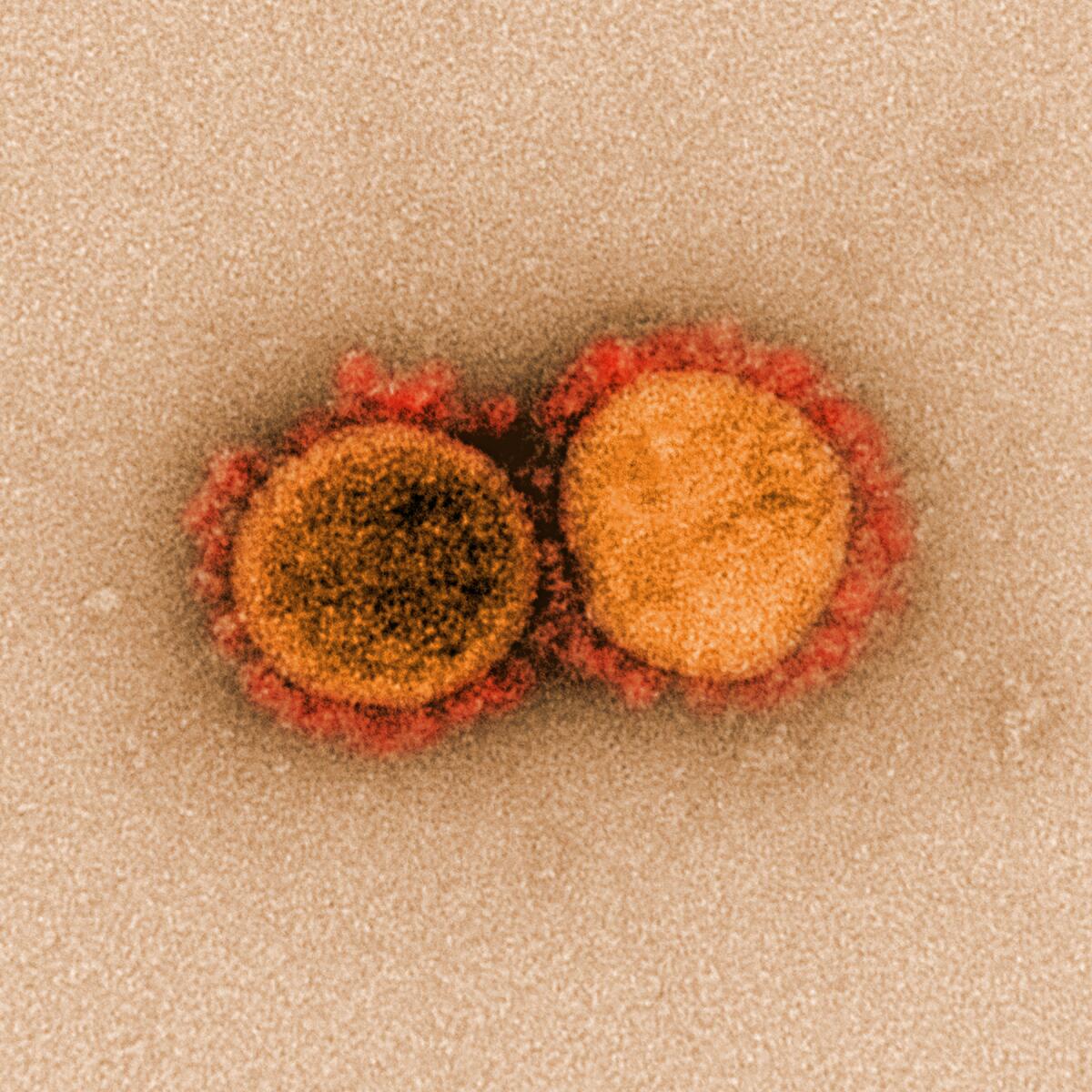
Even as California continues to see big declines in COVID-19 after the recent holiday surge, there is growing concern about another potential problem waiting around the corner.
New research strongly suggests that the coronavirus strain now dominant in California not only spreads more readily than its predecessors, but also has the ability to evade antibodies generated by COVID-19 vaccines or prior infection. It’s also associated with more severe illness and death.
Those attributes have some scientists worried that the homegrown variant could reverse the state’s recent progress in reducing new infections — especially if it’s able to swap mutations with other threatening strains. Experts said it underscores the need to vaccinate people as quickly as possible and to continue wearing masks, maintaining social distance and following other public health precautions as the state begins to reopen more.
Five counties are now eligible to open indoor operations at restaurant dining rooms, gyms, movie theaters, museums, zoos and aquariums amid a dramatic improvement in the COVID-19 pandemic, Gov. Gavin Newsom said Tuesday. Others counties are likely to follow suit soon if cases keep falling.
Many pandemic indicators continue to dramatically improve. California is now recording about 6,000 new coronavirus cases a day, down from 45,000 a day from six weeks ago. The number of COVID-19 patients in California’s hospitals on Sunday was 6,569, down from a high of 21,936 on Jan. 6.
Could the California strain undo this progress? Here’s what we know about the variant that likely emerged in the state in May:
Is the California strain a big deal?
California, along with the rest of the country, has been bracing for an onslaught of a more transmissible strain from the U.K. known as B.1.1.7. But the California strain is probably just as worrisome, and it has already settled in. By the end of next month, the homegrown strain — known to scientists as B.1.427/B.1.429 — will probably account for 90% of the state’s coronavirus infections, said Dr. Charles Chiu, an infectious disease researcher and physician at UC San Francisco.
Samples collected from multiple counties using a variety of methods suggest the variant is 19% to 24% more transmissible.
Chiu and his colleagues at UCSF say the cluster of mutations that characterizes the homegrown strain should mark it as a “variant of concern” on par with those from the United Kingdom, South Africa and Brazil.
The Biden administration is boosting efforts to identify and track coronavirus variants to help scientists see where the pandemic is heading next.
What makes scientists think it’s more transmissible?
Researchers saw uniform patterns in the way the variant spread in counties across the state. And when coronavirus infection rates rose statewide, they typically did so alongside growing evidence of the California strain’s presence.
There’s also evidence from laboratory tests. An analysis of viral samples from around the state showed that, compared with people infected with other strains of SARS-CoV-2, those who were infected with the California strain had viral loads in the nasopharynx that were twice as high. That made it highly likely that each person infected with the new strain would go on to infect more people.
B.1.427/B.1.429’s genome includes three mutations that affect the virus’ spike protein, which it uses to sneak into human cells and convert them into factories for its own reproduction. One of those three mutations, dubbed L452R, affects the so-called receptor binding domain, helping the virus attach more firmly to target cells.
Coronavirus variant first seen in L.A. now accounts for about half of Southern California’s infections and has spread to 18 states and six countries.
Is it dangerous in other ways?
The L452R mutations seems to make the California strain more damaging to the body as well.
A coronavirus engineered to have only that mutation was able to infect human lung tissue at least 40% more readily than other variants now in circulation that lacked the mutation. Compared with those so-called wild-type strains, the engineered virus was also more than three times more infectious.
Dr. Bruce Walker, an immunologist and founding director of the Ragon Institute in Boston, said that while viruses often mutate in ways that make them stronger, such genetic changes often impose a new Achilles’ heel. For instance, a strain that spreads more easily often loses some of its virulence.
The worrisome thing about the California variant, Walker said, is that no apparent weakness has been introduced alongside mutations that confer added strength.
How does it fare against COVID-19 vaccines?
In the lab, the California strain was more resistant to the neutralizing antibodies that are generated in response to COVID-19 vaccines or by a previous coronavirus infection. Compared with existing variants, the reduction in protection was “moderate ... but significant,” the UCSF researchers said.
When the neutralizing antibodies went up against the homegrown strain, their effectiveness was cut in half. By comparison, when these antibodies encountered the coronavirus strain that’s now dominant in South Africa, their effectiveness was reduced to one-sixth of their usual levels.
“I do anticipate over time it is going to have an effect on vaccination,” Chiu said. Though the magnitude of the effect varied from sample to sample and was less pronounced than with the South Africa strain, “it still is concerning,” he said.
The emergence of new virus variants will complicate efforts to end the COVID-19 pandemic, scientists say. But they’re confident we’ll still get there.
Is this strain to blame for the state’s holiday surge?
Not entirely, but it was probably one of many contributors to the surge that dogged the state through the fall and early winter.
In Northern California, at least, new infections had already begun to rise dramatically by the time the new variant had announced its presence, Chiu said. Across Southern California, the overlap was closer.
What’s the ‘nightmare scenario’ with this variant?
The U.K. and California variants are each armed with enhanced capabilities, and the likelihood that they could circulate in the same population raises the specter of a return to spiking infections and deaths, Chiu said. It also opens the door to the possibility that the two viruses will meet in a single person, swap their mutations and create an even more dangerous strain of the SARS-CoV-2 virus.
Chiu called that a “nightmare scenario.”
Dr. Anthony Fauci, the nation’s top infectious disease expert, raised a further concern: A survival-of-the-fittest contest between the U.K. and California variants could accelerate the spread of the strain that’s best able to elude the effects of COVID-19 vaccines, he said. The best way to prevent this, he added, is to stop the spread of either variant by getting vaccinated, wearing masks and limiting exposure to others.
